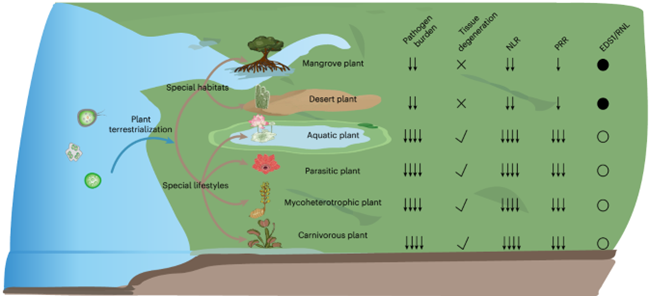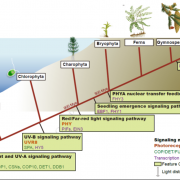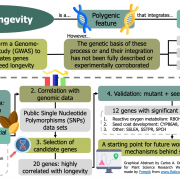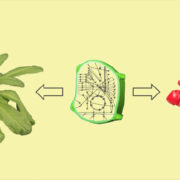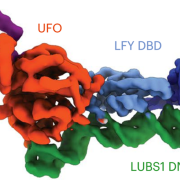Streamlining the immune system: How plants adapt to reduced pathogen pressure
 Although plants are sessile organisms unable to escape pathogen invasions, they are well equipped with defense mechanisms. Cell surface-localized pattern-recognition receptors (PRRs) detect extracellular signals and initiate pattern-triggered immunity (PTI), while nucleotide-binding leucine-rich repeat receptors (NLRs) sense intracellular signals and trigger effector-triggered immunity (ETI). These two layers of immune signaling were long considered distinct pathways but are now recognized as interdependent—essentially functioning as one. While numerous studies have explored the expansion of PRRs and NLRs during plant evolution, particularly during the transition from aquatic to terrestrial environments, the opposite scenario remains less examined: how plants with specialized lifestyles—such as mangrove, desert, or aquatic species—adapt to reduced pathogen pressure. Li and colleagues reassessed 808 angiosperm genomes and found that plants with specialized lifestyles and habitats (SLHs) exhibit significant reductions in PRR and NLR genes due to increased gene loss and reduced gene duplication. Evolutionary association studies further identified key immune regulatory modules, including the well-known EDS1, alongside novel components. These newly identified modules and annotated immune-related genes from 808 angiosperm species offer valuable insights into plant immunity and can be explored through the publicly available database, AirDB (https://efg.nju.edu.cn/AirDB/). (Summary by Ching Chan @ntnuchanlab) Nature Plants 10.1038/s41477-024-01901-x
Although plants are sessile organisms unable to escape pathogen invasions, they are well equipped with defense mechanisms. Cell surface-localized pattern-recognition receptors (PRRs) detect extracellular signals and initiate pattern-triggered immunity (PTI), while nucleotide-binding leucine-rich repeat receptors (NLRs) sense intracellular signals and trigger effector-triggered immunity (ETI). These two layers of immune signaling were long considered distinct pathways but are now recognized as interdependent—essentially functioning as one. While numerous studies have explored the expansion of PRRs and NLRs during plant evolution, particularly during the transition from aquatic to terrestrial environments, the opposite scenario remains less examined: how plants with specialized lifestyles—such as mangrove, desert, or aquatic species—adapt to reduced pathogen pressure. Li and colleagues reassessed 808 angiosperm genomes and found that plants with specialized lifestyles and habitats (SLHs) exhibit significant reductions in PRR and NLR genes due to increased gene loss and reduced gene duplication. Evolutionary association studies further identified key immune regulatory modules, including the well-known EDS1, alongside novel components. These newly identified modules and annotated immune-related genes from 808 angiosperm species offer valuable insights into plant immunity and can be explored through the publicly available database, AirDB (https://efg.nju.edu.cn/AirDB/). (Summary by Ching Chan @ntnuchanlab) Nature Plants 10.1038/s41477-024-01901-x


